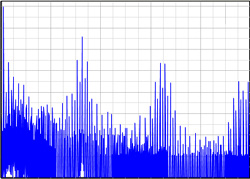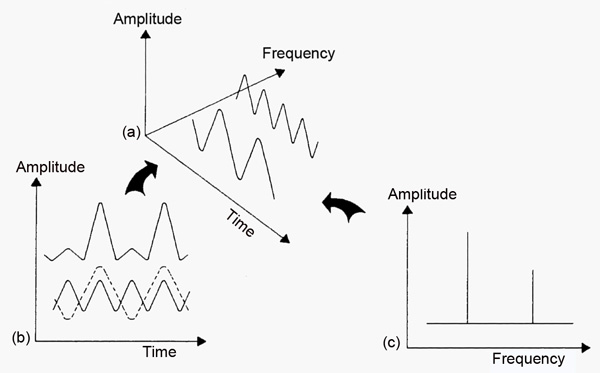
Machines that are intended for production line measurements allow the operator to set upper and lower limits by offsetting a “golden” response trace above and below the desired target.
If the active trace falls within the prescribed tolerance, it registers as a GO. If it does not, then it’s a FAIL. This takes the interpretive factor out of test procedures, either in the factory or the rental shop, and makes it possible for an unskilled operator to produce reliable results.
Other machine-specific capabilities may include waterfall plots that depict arrival and decay times versus frequency in a 3D format; octave and third-octave band analysis calculated from the FFT data; coherence; power spectral density; cross spectrum analysis; and even more in some advanced models.
There are even FFTs equipped with four ports, allowing the operator to view the response of three different measurement microphones placed in three different room locations, all at the same time.
And speaking of time, a fast FFT responds in virtually real-time. The exception is in the very low frequencies where it takes longer to build a time record because of the slow periodicity of the waveforms themselves (i.e. a 20 Hz signal takes a full second to build a twenty frame time record).
The benefit of seeing a response trace change almost immediately as EQ is added, or as a loudspeaker angle is being adjusted, cannot be overstated. Not only does it speed up the work, it improves the quality of the work.
Signal sources built into an FFT may include random white or pink noise, burst random, periodic noise, manually adjustable sine, swept-sine, periodic chirp, burst chirp, and others. But the real power of an FFT is that it can make meaningful measurements with any source that contains enough energy in the spectrum of interest.
Matter Of Coherence
You can measure a sound system in a room full of people by using the program material as the source. This slows things down a bit because the process requires gathering a sufficient number of samples, averaged together, to produce useful results. But that’s no big deal.
On a fast machine, 50 samples can be acquired and averaged in a matter of seconds. And what’s more, the machine will assist in determining if the resultant response curve is valid.

